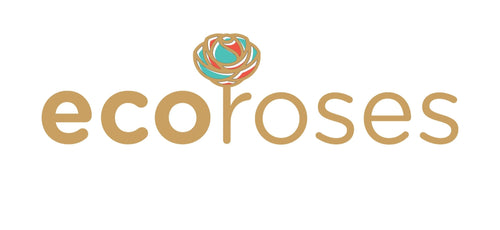Colors influence human psychology in subtle yet powerful ways. They can calm the nervous system, energize the body, or even trigger deep emotions. Flowers, with their vibrant and diverse shades, bring these color effects into our daily lives more naturally than any other element of design. From the tranquility of soft blues to the fiery energy of reds, flower colors can shape moods, thoughts, and behaviors.
In this article, we’ll explore the fascinating psychology of flower colors, how different hues affect the mind, and how you can use them in your home or office. And if you want to experience these benefits firsthand, discover uplifting floral arrangements that pair beauty with emotional impact.
🌼 The Psychology of Color and Flowers
Color psychology is the study of how colors influence perceptions and behaviors. Flowers amplify this effect because they combine visual beauty with fragrance, symbolism, and cultural meaning. For centuries, cultures across the world have used flower colors in rituals, ceremonies, and healing practices.
-
Bright colors often stimulate energy and happiness.
-
Cool tones promote calmness and reflection.
-
Neutral or pastel colors soothe and comfort.
🌸 Red Flowers: Passion and Energy
Red flowers, like roses, poppies, and tulips, are linked to:
-
Love and romance → Symbolizing desire and attraction.
-
Confidence and power → Bold colors energize and inspire.
-
Attention and urgency → Red boosts adrenaline and focus.
Use red flowers in workspaces when motivation is needed, or in romantic settings for passion.
🌼 Yellow Flowers: Optimism and Joy
Yellow flowers, such as sunflowers, daffodils, and marigolds, represent:
-
Happiness → Evoking sunshine and cheer.
-
Friendship → Brightening social bonds.
-
Mental clarity → Enhancing memory and creativity.
Yellow is uplifting but should be balanced—too much can cause overstimulation.
🌸 Blue Flowers: Calm and Reflection
Blue blooms, like hydrangeas, cornflowers, and forget-me-nots, are tied to:
-
Peace and serenity → Reducing stress and tension.
-
Trust and loyalty → Strengthening emotional bonds.
-
Spiritual awareness → Associated with meditation and clarity.
Blue flowers are ideal for bedrooms, therapy spaces, and healing environments.
🌼 Purple Flowers: Creativity and Mystery
Purple flowers, such as orchids, violets, and lavender, symbolize:
-
Luxury and sophistication → Once reserved for royalty.
-
Imagination and inspiration → Stimulating artistic thought.
-
Mysticism and transformation → Spiritual and transformative energy.
Lavender, in particular, calms the mind while sparking creativity.
🌸 White Flowers: Purity and Renewal
White blossoms, like lilies, magnolias, and jasmine, evoke:
-
Peace and simplicity → A calming, clean effect.
-
Spirituality → Used in rituals and ceremonies across cultures.
-
New beginnings → Weddings and life transitions.
White flowers create balance and serenity, especially in minimalist spaces.
🌼 Pink Flowers: Compassion and Love
Pink flowers, including peonies, carnations, and cherry blossoms, are connected to:
-
Gentleness → Soft, nurturing energy.
-
Affection and care → Often given as tokens of appreciation.
-
Hope and joy → Associated with spring and renewal.
Pink blooms are perfect for expressing gratitude or encouragement.
🌸 Orange Flowers: Enthusiasm and Creativity
Orange flowers, such as marigolds, lilies, and zinnias, bring:
-
Vitality → Boosting energy levels.
-
Excitement → Invoking fun and enthusiasm.
-
Warmth → Connecting people in social spaces.
Orange is stimulating and works well in group areas like living rooms.
🌼 Green Flowers: Balance and Renewal
Though rare, green flowers like bells of Ireland symbolize:
-
Harmony → Bringing balance to chaotic spaces.
-
Growth and health → A reflection of nature.
-
Calm energy → Refreshing and restorative.
Green is subtle yet powerful in its grounding effect.
🌸 Black or Dark Flowers: Power and Depth
Dark flowers, like black roses or nearly black tulips, carry:
-
Mystery and elegance → Dramatic and bold energy.
-
Transformation → Endings and new beginnings.
-
Sophistication → Unusual and memorable.
Best used sparingly, black flowers create striking visual statements.
🌼 How to Use Flower Colors in Daily Life
-
At home: Brighten kitchens with yellow or orange blooms, calm bedrooms with blues, and balance living rooms with greens and whites.
-
At work: Place red or yellow flowers in creative spaces to boost energy, or blue and white in meeting rooms for focus.
-
In self-care: Use lavender, roses, or jasmine in floral therapy to relieve stress.
🌸 Final Thoughts
Flower colors are more than aesthetics-they’re natural tools for emotional wellness. Whether it’s calming lavender, energizing sunflowers, or romantic red roses, each bloom affects the mind in unique ways.
By choosing flowers intentionally, you can create spaces that inspire joy, focus, and peace. Start by surrounding yourself with meaningful floral arrangements that transform moods and elevate everyday life.


